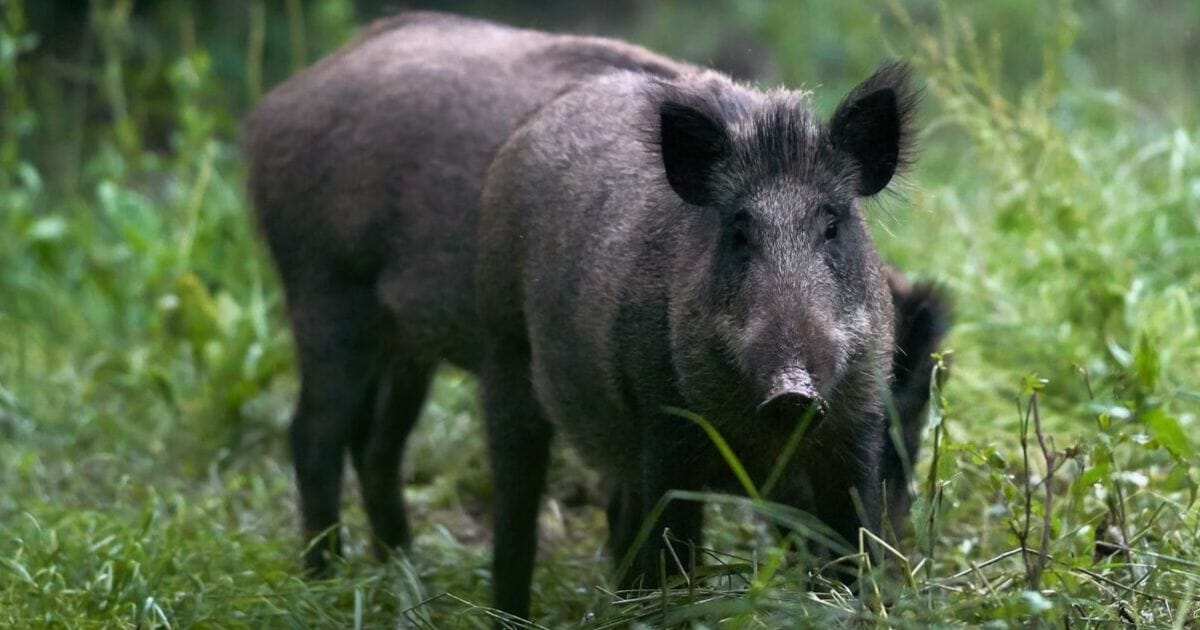
The Other Crisis at the Border: USDA Worried About Increase of Canadian Feral Hogs Invading
Lurking behind an avalanche of bad puns that talk about the “crisis at the boar-der” and the risk of invaders going “hog wild,” is a real danger to Montana’s farmers and ranchers — the slow and steady encroachment of feral hogs on lands along the U.S.-Canada border.
“Multiple people say that if we were to design an invasive species that would do the most widespread damage, feral swine aren’t too far off from being the perfect specimen. It would be a disaster,” said Dale Nolte, program manager for the United States Department of Agriculture’s National Feral Swine Program, according to the Daily InterLake.
And it is getting closer.
Feral hogs currently living in Saskatchewan and Alberta have been drifting south. This year, a group of eight animals was found just north of Lincoln County, Montana, according to John Steuber, a supervisory wildlife biologist for the USDA’s Wildlife Services.
Eight critters might not seem like much, but officials warn that even a small infestation could be a major problem quickly.
“They can decimate the range land by tearing up everything,” said Tahnee Szymanski, an assistant veterinarian with the Montana Department of Livestock.
Feral hogs produce about three litters every two years, with litters that run high as a dozen at a time, producing adults that can routinely weigh up to 250 pounds.
Feral hogs will eat about anything, and root under the surface with their tusks to chew up whatever is in their way to get it, leaving devastated farm fields in their wake.
Seeing the damage they do is easy, but catching them is hard, according to Ryan Brook, an assistant professor at the University of Saskatchewan.
He says feral hogs will become nocturnal when they need to survive human efforts to contain them.
And as if another dimension to the problem was needed, Szymanski said what feral hogs leave behind is nothing compared to the diseases they bring with them — most notably African swine fever and foot-and-mouth disease, both of which can decimate herds that come in contact with the hogs.
“On the international scale, there have been very significant outbreaks of African swine fever. Currently it is believed the disease doesn’t exist in Canada and we certainly hope to keep it that way,” Szymanski said. “Our swine industry in Montana relies heavily on making sure diseases like this don’t come here.”
But that might not be so easy as the feral hog population north of the border continues to multiply.
“Saskatchewan is a very high functioning pig factory and the populations are exploding with very minimal efforts to control them,” Brook said. “Lack of serious action in Saskatchewan is the single greatest threat to Montana.”
Brook said state officials in Montana have done the right thing by increasing vigilance, but there is only so much the state can do.
“Importantly there also is a strong commitment to deal with any animals if and when they might occur in Montana so I think that [Montana] state and federal authorities are very much on the right track to prevent wild pigs from arriving from Canada and becoming established,” Brook said. “My primary concern is that these efforts may, in coming years, be overwhelmed by the rapidly expanding populations in Canada.”
The USDA has warned that the existing feral hog population in America causes about $1.5 billion a year in damage.
The USDA also notes that the American feral hog population has been steadily increasing, and now infests parts of 35 states.
Truth and Accuracy
We are committed to truth and accuracy in all of our journalism. Read our editorial standards.
Advertise with The Western Journal and reach millions of highly engaged readers, while supporting our work. Advertise Today.












